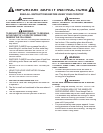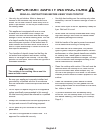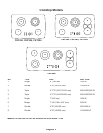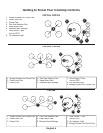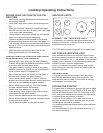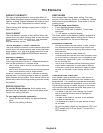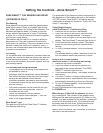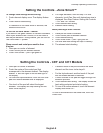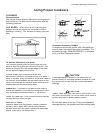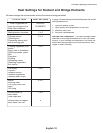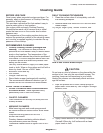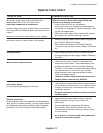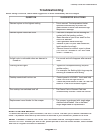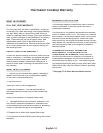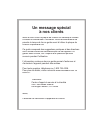
English
9
COOKWARE
Characteristics
The choice of pans directly affects the cooking speed
And uniformity. For best results select pans with the
Following features:
FLAT BASES
– When a pan is hot, the base (pan
bottom) should rest evenly on the surface without
wobbling ( rocking ). Flat, medium to heavy pans are
best.
To test the flatness of your pans:
Turn the pan upside down on the counter top and
place a ruler fl at against the bottom of the pan. The
bottom of the pan and the straight edge of the ruler
should be fl ush against each other.
Another simple test to determine even heat
distribution across the cookware bottom is to place 1”
water in the pan. Bring the water to a boil and observe
the location of the bubbles as the water starts to boil.
Good, fl at cookware will have an even distribution of
bubbles over the bottom surface area.
DIAMETER
– The base of the pan should cover or
match the diameter of the element being used. Pans
may overhang the element area by 1” all around.
TIGHT FITTING LID
– A lid shortens cooking time by
holding the heat inside the pan.
SPECIALTY PANS
Specialty pans such as griddles, roaster, pressure
cookers, woks, water bath canners and pressure
canners must have the same features as described
above. (Use only a fl at-bottom wok.)
Customer Accessory Griddle
An anodized aluminum griddle with a fl at base and
sized to span the bridge elements is available. The
accessory griddle, Model AEGRIDDLE, is available
from your local Thermador dealer.
CAUTION
Foods packaged in aluminum foil should not be
placed directly on the glass ceramic surface for cook-
ing; aluminum foil can melt and cause permanent
damage.
Cooktop Operating Instructions
Using Proper Cookware
CAUTION
Plastic, paper and cloth can melt or burn when in con-
tact with a hot surface. Do not let these items come in
contact with the hot glass ceramic surface.
Do not allow pans to boil dry. This can permanently
damage the pan, the element and the cooktop glass.



